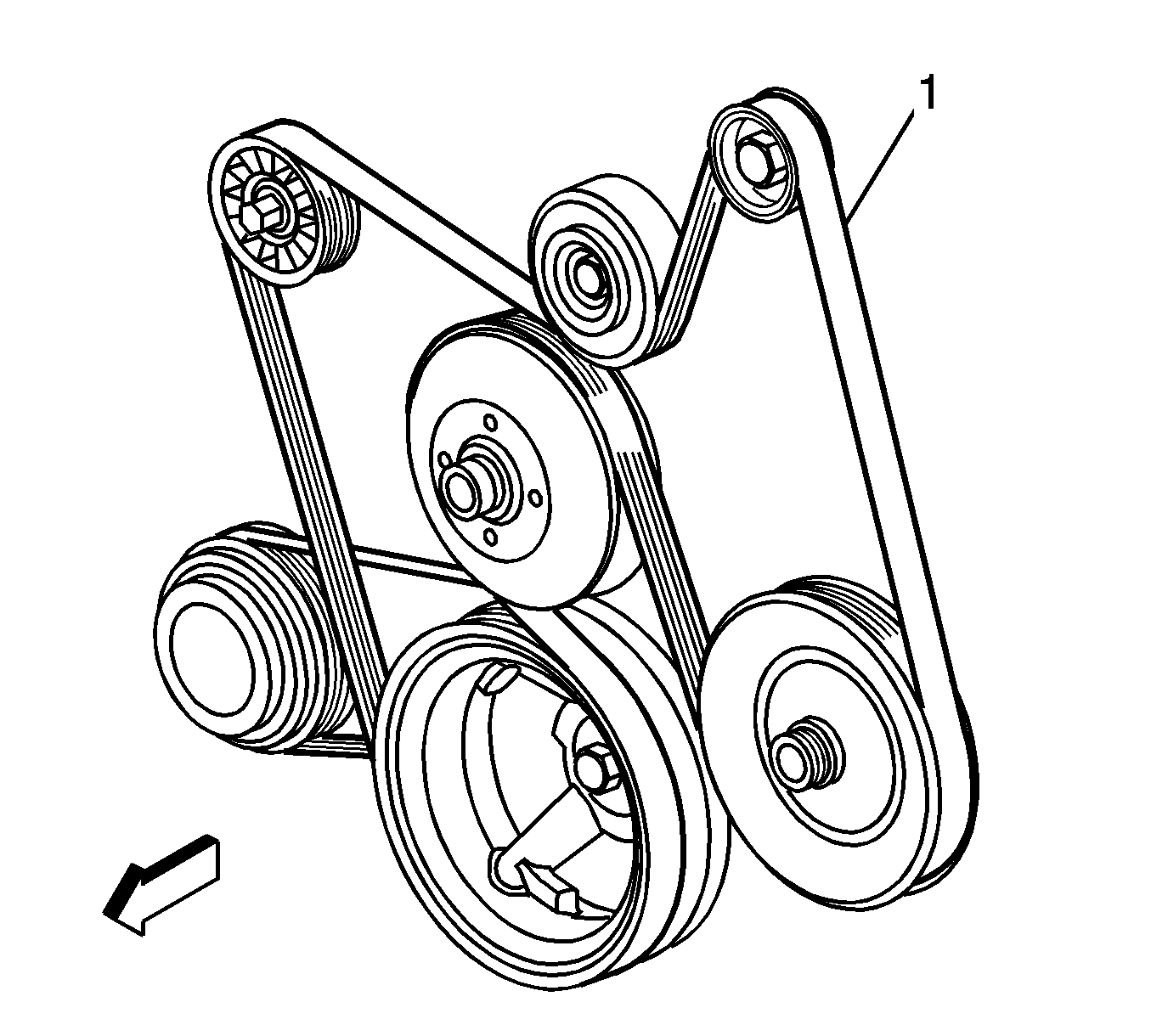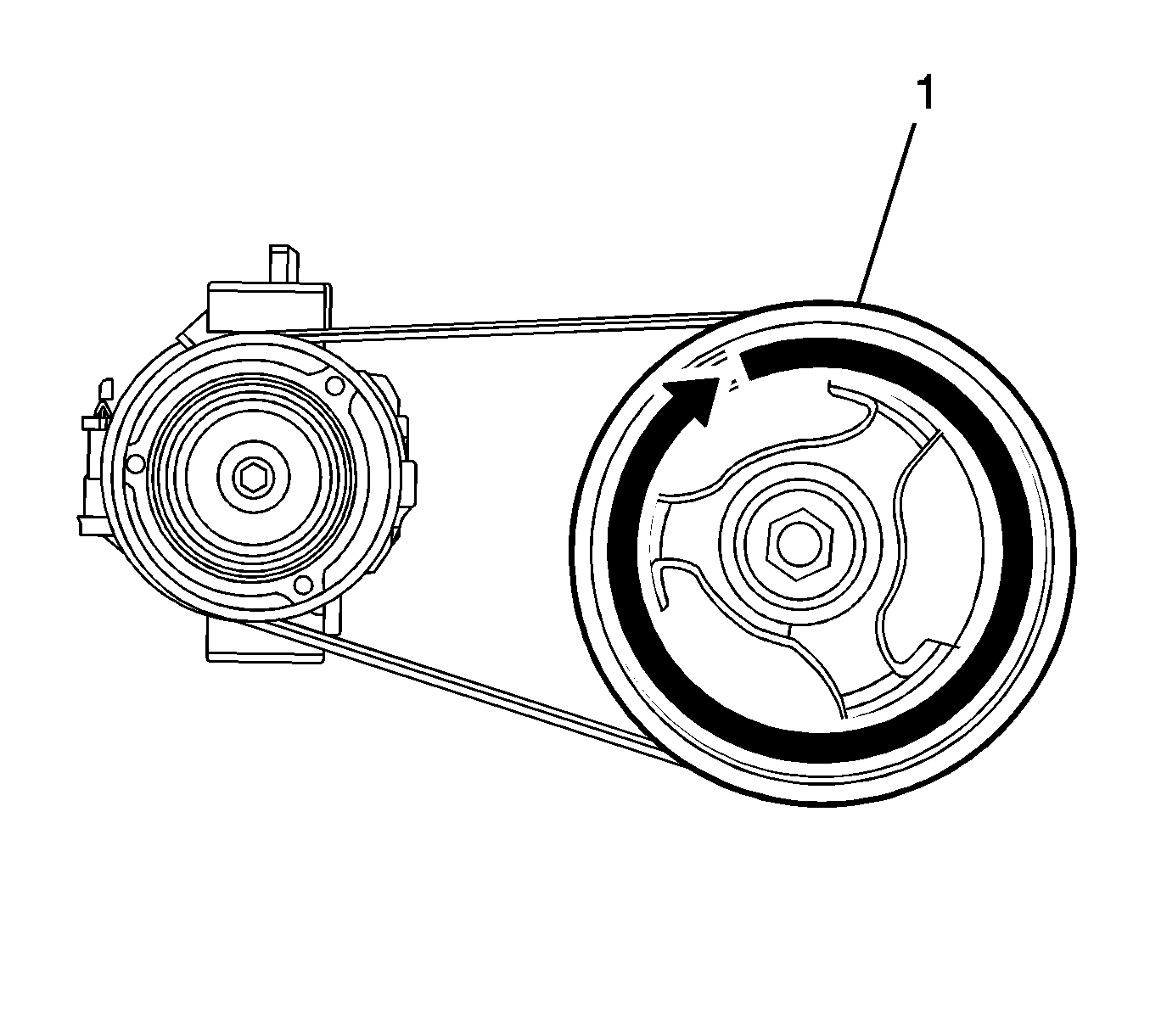The drive belt system consists of the following components:
| • | The drive belt tensioner |
| • | The drive belt idler pulley |
| • | The crankshaft balancer pulley |
| • | The accessory drive component mounting brackets |
| • | The accessory drive components |
| - | The power steering pump |
| - | The water pump, if belt driven |

The drive belt system may use 2 belts. The drive belt (1) is thin so that it can bend backwards and has several ribs to match the grooves in the pulleys. The drive belts are made of different types of rubbers - chloroprene
or EPDM - and have different layers or plies containing either fiber cloth or cords for reinforcement.
Both sides of the drive belt may be used to drive the different accessory drive components. When the back side of the drive belt is used to drive a pulley, the pulley is smooth.
The drive belt is pulled by the crankshaft balancer pulley across the accessory drive component pulleys. The spring loaded drive belt tensioner keeps constant tension on the drive belt to prevent the drive belt from slipping. The drive belt tensioner arm
will move when loads are applied to the drive belt by the accessory drive components and the crankshaft.
The drive belt system has an idler pulley, which is used to add wrap to the adjacent pulleys.
A/C Compressor Drive Belt

The outward appearance of the belt (1) is similar to the current design serpentine belt. The reinforcing cord provides its unique qualities. The belt cord is made of a polyamid material. The polyamid cord is more elastic than the more traditional
aramid or polyester cord designs. A tensioner is not needed.
Polyamid cord, when combined with a more elastic backing compound, ensures the belt is able to maintain the specified tension within the specified range of usage.


